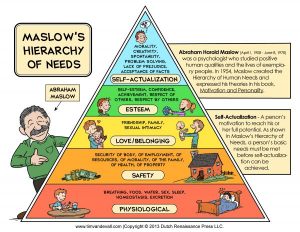You’re not the same. You’re not supposed to be the same. You’re supposed to be different. This isn’t something you will ever forget. ~Daisy Whitney, The Rivals
I’ve written about how I view healing compared to processing trauma. It is an important differentiation to make, I believe, and the quote above pretty much sums it up for me.
The reality is that the traumatic events we have each experienced did happen. And they did change us. Molecularly, yes. And more importantly, fundamentally those events in so many ways inform who we have been, who we are currently, and will continue to inform the people we continue to evolve into.
The events happened. There is no changing that. The conscious memories we do have, we will not forget. They are imprinted now in our explicit memory.
And.
The body remembers too. That remembering shows up as anxiety and or depression. It shows up as a low tolerance for sudden and loud sounds. It shows up, for me, in my own yelly-ness.
However, the implicit memory of the body is something that can actually be reset. While the mind will remember forever the things that it does (barring any dementia in the future), the body can release the memories of trauma that lives within it.
This is true for all of us.
This resetting is not done quickly. It usually involves a lot of discomfort and moving out of our own norms and ways of doing and being. Often times things may feel like they are getting worse before they get better. And sometimes we reach a point of wishing we’d never started down this journey of processing the trauma that lives in our bodies and being.
Life can be challenging, even hard. Often there are discussions out in the greater world, as well as in our private lives, that are uncomfortable and even triggering. Add to this the fact that sometimes our anxiety ramps itself up without any obvious cause and well, our daily lives can be challenging at best.
There are times where we forget all we know about how to self-regulate and self-soothe. There are times that we need someone else to help us reset. There are times of lots of tears and actually feeling some pretty intense feelings.
Which is to say, that while we may have processed a lot of the trauma that lives within us, there is (always?) still more work to do. And also, life happens to all of us and sometimes we just have bad days or weeks or months.
And.
While it is true there are times that we can’t access all the things we know about self-soothing and self-regulating, with practice there will be more times that we are able to access at least some of what we know and utilize the tools we have worked so hard to ingrain in our mind and body.
Here’s an important thing to note however: there is a difference between calming our nervous systems and not feeling our feelings.
Stuffing our feelings, not allowing them to be expressed in some way, is not the same as calming, soothing, or resetting our systems.
While it is true that we may be able to calm our anxiety and bring ourselves back from our amygdala, it is also true that we are also able to cry and feel sadness.
We can both feel sad and have our nervous system regulated at the same time, is what I’m trying to say.
Sometimes I think we are sold a bill of goods on what it means to process our trauma, or to heal our brain stems, or to reset our nervous systems. Doing these things does not mean we will not feel intense sadness. It does not mean we will only ever be happy shiny people.
Having a healthy nervous system does not stop us from feeling grief. Or fear.
What it does is allow us to feel those emotions, and the sensations that go with those emotions, and still remain present in our bodies and in the present moment.
In fact, I would argue, that having a healthy nervous system, one that is not in a constant activated state of fight/flight/freeze, may mean we actually feel those emotions more intensely. Because we stay with them in the now. Because we literally are able to feel them in our bodies. Because we are no longer stuffing them down or disassociating from what is happening within us.
I believe this is an important thing to note:
At times, having a healthy nervous system may actually mean we feel worse.
BUT.
That feeling worse, is momentary. It isn’t a constant state. It will pass.
AND.
That sense of feeling “worse” is actually part of the resetting. It is part of learning to actually feel the emotions and sensations that we have been ignoring for so long. It is part of learning that we can feel our feelings and not be flooded or overwhelmed by them, even if they feel overwhelming in the moment.
When we first start to do the work of trauma processing and coming home to our bodies, everything is new. Even the slightest sensations or emotions can feel intense. Not overwhelming, but intense. It is the newness of it all that can feel a bit “too much” even though in actuality our systems are not being activated or flooded in a trauma sense.
We can feel intense emotions and sensations and not be overwhelmed back into an activated state.
Feeling our emotions and the sensations of our body is not the same as being triggered into a trauma state.
Over the last few years there have been more and more times where I have felt all those emotions and sensations. It is not fun. I have cried a lot of tears. AND I was not in a fight/flight/freeze state. It is true at some points I was not verbal, and often being in our emotions is a non-verbal state and so we find other ways to express ourselves (crying, art, cleaning, movement, etc). It is true that when our nervous systems are activated that we can become more flooded when we feel our emotions and sensations.
It is true that being non-verbal is also part of having activated nervous systems and being in a fight/flight/freeze state. It is true that a sense of overwhelm is part of having the trauma living within us triggered and activated.
And.
It is also true that with time and processing, we learn the difference between feeling our feelings and becoming or being flooded or overwhelmed or triggered.
We learn to tolerate uncomfortable sensations and emotions without going into a fight/flight/freeze state. We learn that feeling our emotions and the sensations of our body isn’t dangerous or life threatening.We learn to hold ourselves and allow ourselves to be held.
It takes work and time. In many ways it has taken me years and in others mere months to be where I am now. To be able to feel intense sadness without becoming lost in a forever downward spiral. To be able to feel both the intensely uncomfortable and intensely pleasurable sensations of my body without going into a trauma triggered state.
I now have a sense of freedom and safeness within myself that I had not had for most of my life. And it is amazing, even when feeling some of these emotions and sensations isn’t always pleasant.
This sense of freedom is something I want for everyone. The journey to this place is not easy; it is filled with challenges and discomfort. It is also filled with rewards and peace. And I believe it is all worth it.
/../
This essay was originally written for my weekly newsletter in January 2018 and has been edited for publication here. To receive my most current essays you can subscribe to my newsletter here.

